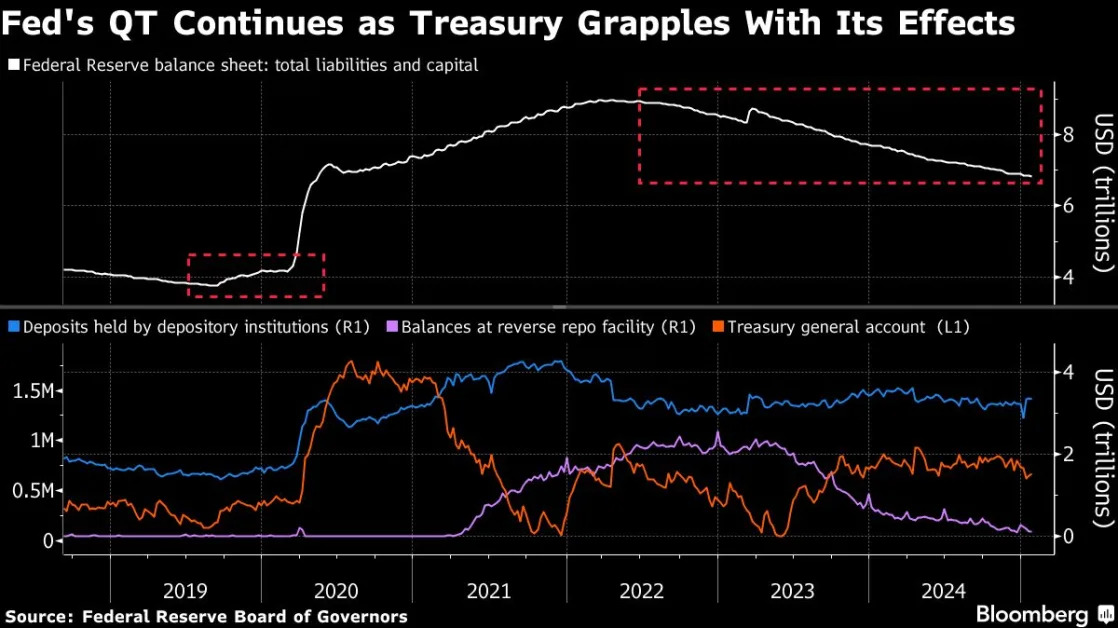(Bloomberg) -- Investors who expect central banks in industrialized nations to successfully tap the brakes on growth while skirting downturns would do well to target five-year bonds, according to Pacific Investment Management Co.
Newport Beach, California-headquartered Pimco sees those maturities sitting in the sweet spot as policymakers ratchet down interest rates and investors deploy cash that has long been sitting on the sidelines. The asset manager runs the $167 billion Pimco Income Fund (PIMIX) — the world’s largest actively managed bond fund — which has beat 90% of peers over the past five years.
“The US economy, like others, appears poised to achieve a rare soft landing – moderating growth and inflation without recession,” wrote Pimco’s Tiffany Wilding, an economist, and Andrew Balls, the firm’s CIO of global fixed income. “Cash rates are set to decline alongside policy rates, while high government deficits may drive long-term bond yields higher over time.”
Things are already looking up: the US fixed-income market ended September with a five-month streak of gains, its best run since 2019. And in the 12 months since Treasury yields topped 5%, the Bloomberg US Aggregate index has returned a little over 11%.
But investors hold a record $6.46 trillion in US money market funds while yield on the five-year Treasury, which historically performs well during periods of easing, sits just under 4%.
In this environment, Pimco said, five-year bonds stand to benefit from price appreciation, in contrast “it creates reinvestment risk for cash and other short-term instruments.”
“Central banks, especially the Fed, are focused on returning monetary policy rates to estimated neutral levels,” the pair said in their cyclical outlook for the next six to 12 months published Wednesday. They see the US’s neutral rate — where the economy is neither growing nor restricted — in the range of 2% to 3%.
The manager of $1.9 trillion of fixed-income assets expects developed market central banks to ease rates by 1.75 to 2.25 percentage points in 2025. The Bank of Japan is an exception as Pimco expects “gradual rate hikes despite recent market volatility and yen strength.”
Across the Curve
Important areas of the US yield curve have normalized, snapping a record period of inversion as the Fed finally began easing rates last month. The US two-year yield recently traded more than 20 basis points above the 10-year, the most since June 2022.
The US presidential election in November “reinforces our curve steepening view,” the pair wrote. Tariffs, particularly those proposed by former President Donald Trump, would present an inflationary challenge for the Fed.
“US deficits will be the biggest loser no matter which party wins,” they warned, citing a “lack of political will to curb entitlement spending.”
Globally, Pimco prefers owning more interest-rate exposure in areas where terminal pricing is higher than the US, like the UK and Australia.
The asset manager favors higher-quality credit and structured products while advising caution in fixed income “given some complacency we see in corporate credit due to tighter valuations.”
“Lower-quality, floating-rate private market areas appear more vulnerable to economic downturns and interest rate changes than prices suggest,” they warned.
Other points of consideration for investors over the next year include:





